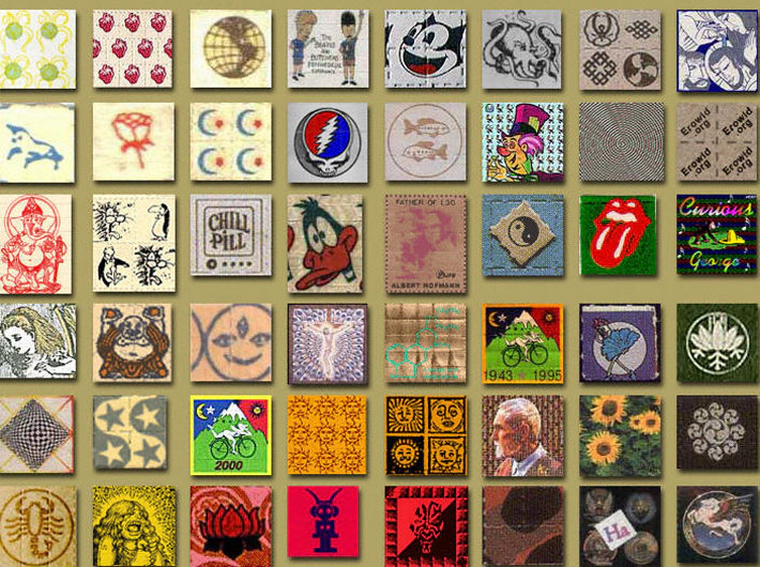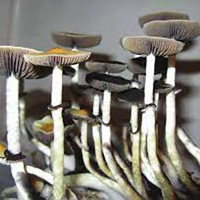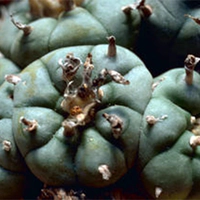What Are Hallucinogens and Psychedelics?
Hallucinogens have been circulating in modern society for over fifty years and doing a lot of damage along the way.

Depicted in movies and popular music and pop culture as a way to “Expand Your Mind,” hallucinogens have been circulating in modern society for over fifty years and doing a lot of damage along the way. Some of the names are, shrooms, angel dust, hell’s bells, and acid. Acid, also known as LSD, is the granddaddy of these drugs in terms of strength and unpredictability.
What Is LSD?
LSD (lysergic acid diethylamide) is a listed by the Food and Drug Administration as a Schedule I drug. Substances in this schedule have no currently accepted medical use in the United States, a high potential for abuse and a lack of accepted safety for use, even under medical supervision. LSD is a semisynthetic form of the ergot fungus, which is a fungus that infects rye and other grains.
Historically, the first mentions of ergot were in the Middle Ages in Europe where outbreaks of ergot poisonings affected thousands of persons at a time. The cause was a mystery and was assigned to superstitious sources. One such supposed source of the affliction was witchcraft. It is now widely believed that the hysteria that can accompany ergot poisoning is to blame for many of the witch trials in Europe and the New World. Witch-hunts hardly occurred where people didn’t eat rye. There are also speculations that ergot was involved in ancient preparations of the Vedic ritual drink soma and also kykeon in ancient Greece, as mentioned in The Iliad.
LSD was first synthesized in 1938 by Dr. Albert Hofmann, a pharmacist working in the Swiss pharmaceutical company Sandoz. LSD (techinically LSD-25) was the twenty-fifth derivative from ergot. Hofmann was hoping to discover a medication which could be used to stimulate circulation and respiration. The hallucinogenic properties of LSD remained unknown until five years later, when Hofmann accidentially absorbed a dose of LSD through his fingertips while he working on a new method to synthesize the substance.1
Of the experience Hoffman described it as becoming “strangely inebriated” and that he “lost all control of time” and that he was eventually “overcome with fears that [he] was going crazy.” In his book, LSD, MY PROBLEM CHILD, Dr. Hofmann wrote: “Every exertion of my will, every attempt to put an end to the disintegration of the outer world and the dissolution of my ego, seemed to be wasted effort. A demon had invaded me, had taken possession of my body, mind and soul.”
LSD Is Toxic

Even those who believe there may be some benefit to this drug admit that LSD is an incredibly powerful substance. The usual dose that a human would take is around 65 micrograms, which is less than three millionths of an ounce. This means that LSD is some 5,000 to 10,000 times more powerful than the drug mescaline, another powerful hallucinogen that comes from a cactus named peyote. In one report from 1962, two psychiatrists, Louis Jolyon West and Chester M. Pierce, injected a 7000-pound bull elephant with LSD. The animal collapsed in five minutes with convulsions and died in agony in less than two hours. The dose given to the elephant was less than one third of one gram. The stated purpose of this irresponsible test was to study madness in male elephants. Despite the known serious health effects of LSD, this compound and other similar chemicals were secretly tested as “mind-control” drugs by psychiatrists on behalf of various governments during the 1950s. One such series of tests carried out by the CIA under the code name MK-ULTRA, used LSD and several other such substances on test subjects that included mice, rabbits, rats and humans. In the end, the MK-ULTRA project was scrapped.
LSD was classified as a Schedule I drug in 1974 and the National Institute of Mental Health determined that LSD has no therapeutic use in 1974.
What Are “Shrooms”?

Courtesy of DEA.gov
Often called “magic mushrooms,” this is a group of psychedelic drugs whose active ingredients are psilocybin and silocin, which is derived from the over 100 different species of mushrooms, the most common of which are Psilocybe cubensis mushrooms. The chemical structure of psilocybin is simliar to LSD and so are the effects.
What is “Hell’s Bells”?
Datura Stramonium or, “Hells Bells” is another hallucinogen which is not as popular because of the likelihood of overdose and the distinctly long periods of action. A user taking hells bells can be out of it for two days. This drug is also known by the names devil’s snare, devil’s trumpet, jimson weed, or thorn apple.
What Is Peyote?

Courtesy of DEA.gov
Peyote, also called mescaline, is Native to Mexico and parts of Texas. The peyote cactus has reportedly been used for spiritual ceremonies by shamans and seers for many centuries. Yielding the drug mescaline, peyote is a powerful and therefore dangerous hallucinogen.
With each of these drugs there are distinct physical dangers, but the real danger lies in the psychological effects. The physical effects of these drugs can include nausea, and vomitting and overdose can result in seizures and death, but the real danger of hallucinogens is always the mental alterations and the strange, even frightening visions and emotions that are experienced while high, or “tripping.” The danger is to the mind—which is the most valuable thing you own. In a very real way, a person’s abilities, potentials and even the quality of life depend on the mind and how sharp and quick it is. That is what a person risks when taking a hallucinogen. Every experience, every vision or perception of any kind is recorded and stored by this amazing thing called a mind. You use it constantly and you have been programming it with data since before you were born. It is actually the biggest and fastest computer in existence. When a person takes a drug such as acid or shrooms, the drugs alter, purposely, the mind. Memories are altered; perceptions and recalls can be changed. Decisions can be made during these moments, and although these decisions are based on these temporary alterations, they can become permanent. So the trip is not just a temporary thing. The trip can change the direction of someone’s life.
Sources:
-
Darryl S Inaba, William E Cohen. “Uppers, Downers, and All Arounders.” Cns Productions, 2022. ↩︎






 ®
®